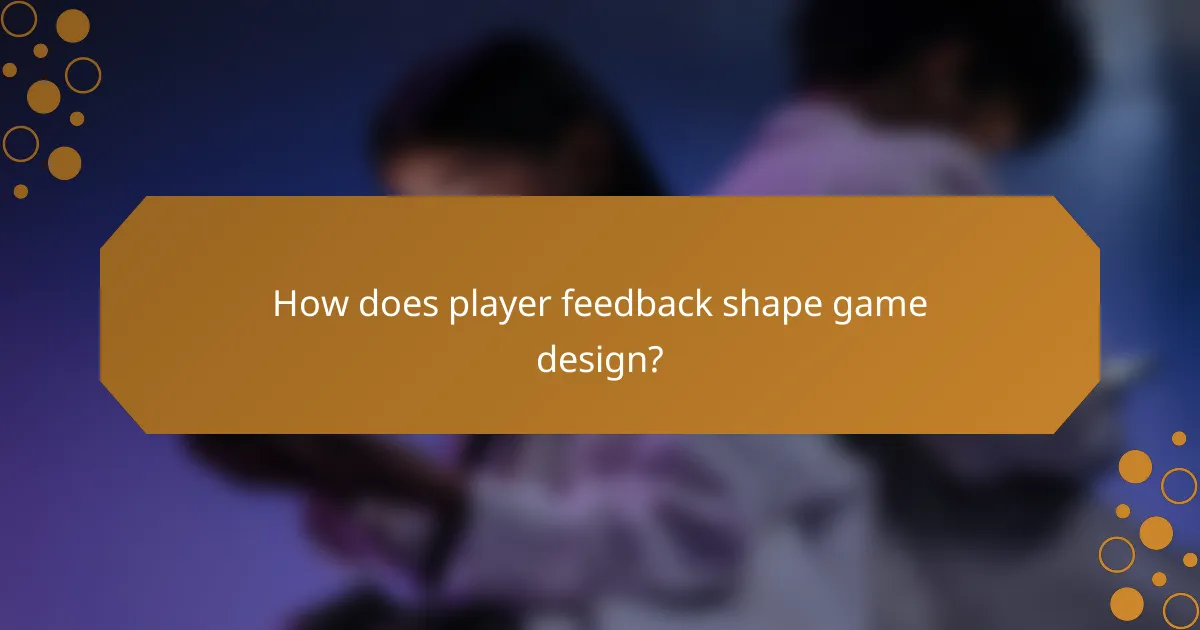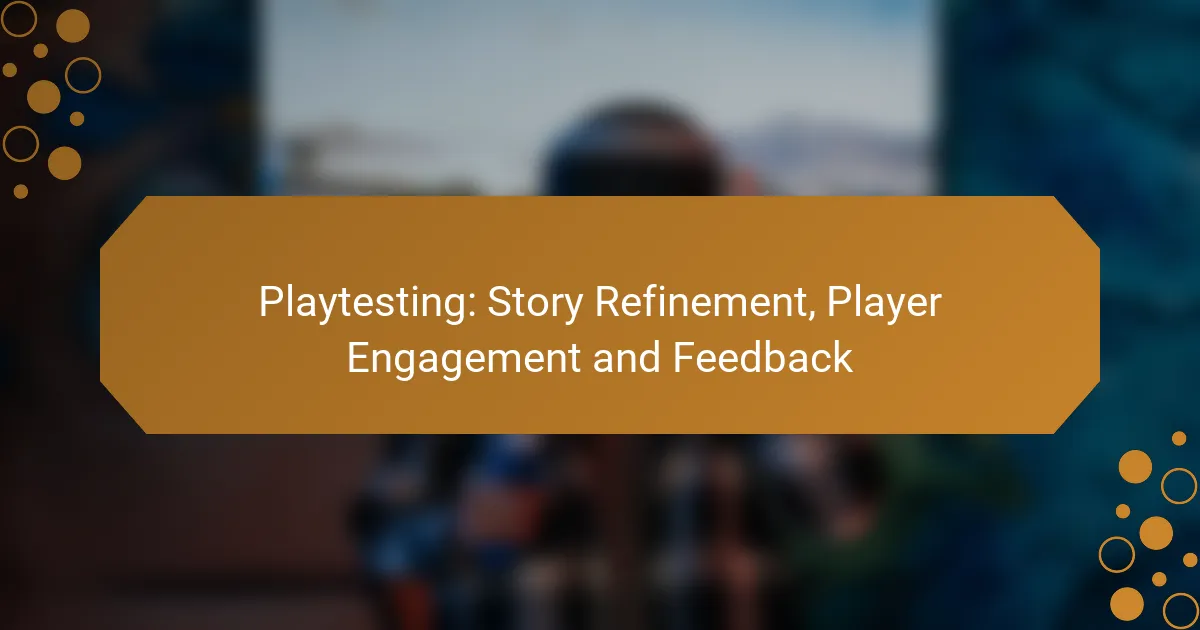Player behavior analysis is crucial for enhancing engagement in gaming, as it provides developers with valuable insights into player interactions and preferences. By leveraging this data, developers can craft compelling narratives and gameplay mechanics that resonate with their audience, ultimately fostering a deeper investment in the game experience.

How can player behavior analysis improve engagement?
Player behavior analysis enhances engagement by providing insights into how players interact with games, allowing developers to tailor experiences that resonate with their audience. By understanding patterns and preferences, developers can create more compelling narratives and gameplay mechanics that keep players invested.
Data-driven insights
Data-driven insights involve collecting and analyzing player data to identify trends and preferences. This can include metrics such as playtime, in-game purchases, and completion rates. By leveraging analytics tools, developers can pinpoint what features attract players and which aspects may need improvement.
For example, if data shows that players frequently abandon a game after a specific level, developers can investigate that level’s design or difficulty. This approach allows for informed decisions that enhance player retention and satisfaction.
Enhanced user experience
Improving user experience is crucial for maintaining player engagement. By analyzing player behavior, developers can identify pain points and streamline gameplay. This might involve simplifying navigation, reducing loading times, or adjusting difficulty levels to better match player skill.
Implementing feedback mechanisms, such as surveys or in-game prompts, can also help gather direct insights from players. This feedback loop ensures that the game evolves in line with player expectations, fostering a more enjoyable experience.
Targeted content strategies
Targeted content strategies focus on delivering personalized experiences based on player behavior. By segmenting players into groups based on their actions, developers can tailor content, such as quests or rewards, to meet specific interests. This approach increases the likelihood of player engagement and satisfaction.
For instance, if a segment of players shows a preference for combat-related content, developers can create more challenges or storylines centered around that theme. This targeted approach not only keeps players engaged but also encourages them to explore different aspects of the game.

What tools are effective for player behavior analysis?
Effective tools for player behavior analysis include platforms that track user interactions, engagement metrics, and gameplay patterns. These tools help developers understand player preferences and improve game design accordingly.
Google Analytics for Games
Google Analytics can be adapted for games to track user behavior, retention rates, and conversion metrics. By implementing event tracking, developers can monitor specific actions such as level completions, in-game purchases, and social sharing.
To set up Google Analytics for a game, integrate the SDK and define key events you want to track. This allows for real-time insights into player engagement and helps identify areas for improvement.
Unity Analytics
Unity Analytics is tailored for games developed in the Unity engine, providing insights into player behavior directly within the development environment. It offers features like player segmentation, funnel analysis, and custom event tracking.
Using Unity Analytics, developers can easily visualize data trends and make data-driven decisions to enhance gameplay. It is particularly useful for understanding player retention and monetization strategies.
Mixpanel for user engagement
Mixpanel specializes in tracking user engagement through detailed analytics on how players interact with a game. It allows developers to create funnels, track retention, and analyze user paths to optimize game experiences.
By leveraging Mixpanel’s capabilities, developers can identify which features drive engagement and which may need refinement. This tool is beneficial for A/B testing and understanding the impact of updates on player behavior.

What narrative techniques enhance player engagement?
Narrative techniques that enhance player engagement include dynamic storytelling, character development, and player choice integration. These methods create immersive experiences that keep players invested in the game world and its characters.
Dynamic storytelling
Dynamic storytelling involves adapting the narrative based on player actions and decisions, creating a personalized experience. This technique can lead to multiple story outcomes, encouraging players to explore different paths and replay the game. For instance, a game might change its ending based on key choices made throughout the gameplay, increasing replayability.
To implement dynamic storytelling effectively, consider using branching narratives and real-time consequences for player actions. This can involve altering dialogues, character relationships, or even game environments based on previous decisions.
Character development
Character development is crucial for building emotional connections between players and the game. Well-developed characters with distinct personalities, backgrounds, and growth arcs can enhance player investment. For example, a character who evolves from a reluctant hero to a confident leader can resonate deeply with players.
To foster strong character development, provide players with opportunities to learn about characters through interactions, backstory reveals, and meaningful choices. This can create a sense of attachment and motivation to see characters succeed or fail.
Player choice integration
Integrating player choices into the narrative allows players to feel a sense of agency and ownership over the story. When players can make impactful decisions that influence the game’s direction, they are more likely to engage deeply with the content. This can include moral dilemmas, strategic choices, or even dialogue options that shape relationships.
To effectively integrate player choices, ensure that decisions have visible consequences and that players can see how their choices affect the game world. This can be achieved through feedback mechanisms, such as changing environments or character reactions, which reinforce the significance of player agency.

How does player feedback shape game design?
Player feedback is crucial in shaping game design as it provides developers with insights into player preferences and experiences. By analyzing this feedback, designers can make informed decisions that enhance gameplay and overall satisfaction.
Iterative design improvements
Iterative design improvements involve continuously refining a game based on player input. Developers often release updates that address specific issues highlighted by players, leading to a more polished final product. For example, a game might receive patches to fix bugs or adjust difficulty levels based on player feedback.
This process allows for a dynamic development cycle where changes can be made quickly, ensuring that the game evolves in line with player expectations. Regular updates can keep the community engaged and invested in the game’s progress.
Community-driven updates
Community-driven updates leverage the collective voice of players to guide development priorities. Developers can create forums or surveys to gather opinions on potential features or changes, allowing players to feel involved in the design process. This approach can lead to updates that resonate well with the player base, enhancing loyalty and engagement.
For instance, a game might introduce a new character or gameplay mechanic that players have specifically requested, demonstrating responsiveness to community desires. This not only improves the game but also fosters a sense of ownership among players.
Feedback loops for engagement
Feedback loops are essential for maintaining player engagement over time. By establishing channels for players to share their thoughts, developers can create a cycle where feedback leads to changes, which in turn generates more feedback. This ongoing interaction keeps players invested in the game’s evolution.

What are the key metrics for measuring player engagement?
Key metrics for measuring player engagement include retention rates and session length. These metrics provide insights into how often players return to the game and how long they spend playing, which are crucial for understanding overall player satisfaction and game performance.
Retention rates
Retention rates indicate the percentage of players who continue to engage with a game over time. This metric is typically measured at various intervals, such as day 1, day 7, and day 30 after installation, providing a clear picture of player loyalty and game stickiness.
For example, a day 1 retention rate of 40-50% is considered strong in mobile gaming, while a day 30 retention rate above 10% is often seen as a sign of a well-received game. Monitoring these rates helps developers identify trends and make necessary adjustments to enhance player experience.
To improve retention rates, focus on onboarding experiences, regular content updates, and community engagement. Avoid overwhelming players with too many features at once, as this can lead to early drop-offs.
Session length
Session length measures how long players spend in a game during a single play session. This metric can vary widely depending on the game type, with casual games often seeing shorter sessions of 5-15 minutes, while more immersive titles may average 30 minutes or longer.
Understanding session length helps developers gauge player engagement and satisfaction. A consistently short session length might indicate that players are not fully invested, while longer sessions can suggest a compelling gameplay experience. Aim for a balance that keeps players engaged without causing fatigue.
To optimize session length, consider implementing features that encourage longer play, such as rewarding players for completing challenges or exploring new content. However, be cautious not to create a grind, as this can lead to player burnout.


